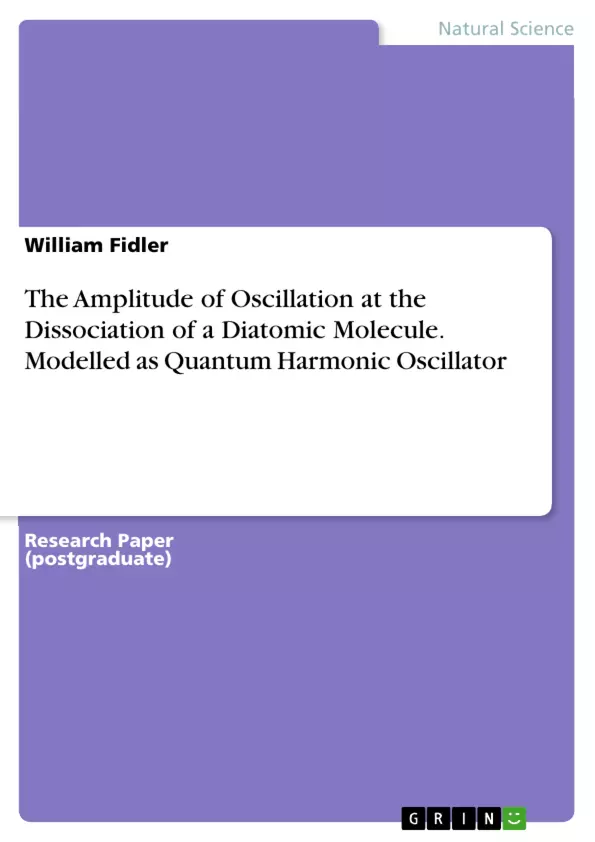This work uses findings to generate a set of simple dimensionless equations, one of which yields the maximum amplitude of oscillation of the system at dissociation. The equations incorporate experimental data which are widely available and a set of such data for simple molecules is presented at the conclusion of the work. The simplicity of the equations developed is exemplified by that for the maximum amplitude of oscillation, Xe, when the system encounters an incoming photon possessing the magnitude of the dissociation energy, De, of the molecule, i.e. (Xe/R) = 2 sqrt(De.Be)/We.
Here, R is the bond length, We, the energy of the photon which raises the system from the ground state to the first excited state, and Be is the bond rotational constant. It is suggested that the simple expressions developed here have their application in the violent events associated with dissociation in shock waves and/or high energy particles emanating from stellar collapse and hence may be of utility in these areas of astrophysical modelling.
Table of Contents
- Introduction
- Analysis
- Specimen calculations of the maximum dimensionless amplitude of a selection of simple diatomic molecules.
- Additional data for a selection of simple diatomic molecules..
- Discussion
- References
Objectives and Key Themes
This work aims to develop simple dimensionless equations describing the maximum amplitude of oscillation of a diatomic molecule at dissociation, modeled as a quantum harmonic oscillator. These equations incorporate experimental data and are proposed to have applications in astrophysical modeling.
- Modeling of a diatomic molecule as a quantum harmonic oscillator
- Derivation of equations for the maximum amplitude of oscillation at dissociation
- Application of the model to astrophysical scenarios involving shock waves and high energy particles
- Comparison of the model to existing models, such as the Morse potential
- Examination of the role of photons in the excitation and dissociation of molecules
Chapter Summaries
- Introduction: This chapter provides an overview of the quantum harmonic oscillator model for diatomic molecules, highlighting its limitations and contrasting it with the Morse potential model. It also introduces the concept of photons as a source of excitation and dissociation.
- Analysis: This chapter presents the derivation of the energy eigenstates for the diatomic molecule model developed in the previous work. It discusses the role of photons in exciting the molecule and the relationship between the potential energy of the bond and the energy of the incoming photon.
Keywords
Diatomic molecule, quantum harmonic oscillator, dissociation, amplitude of oscillation, photons, astrophysical modeling, Morse potential, energy eigenstates, reduced mass, bond force constant, shock waves, high energy particles.
- Quote paper
- William Fidler (Author), 2020, The Amplitude of Oscillation at the Dissociation of a Diatomic Molecule. Modelled as Quantum Harmonic Oscillator, Munich, GRIN Verlag, https://www.grin.com/document/901616



